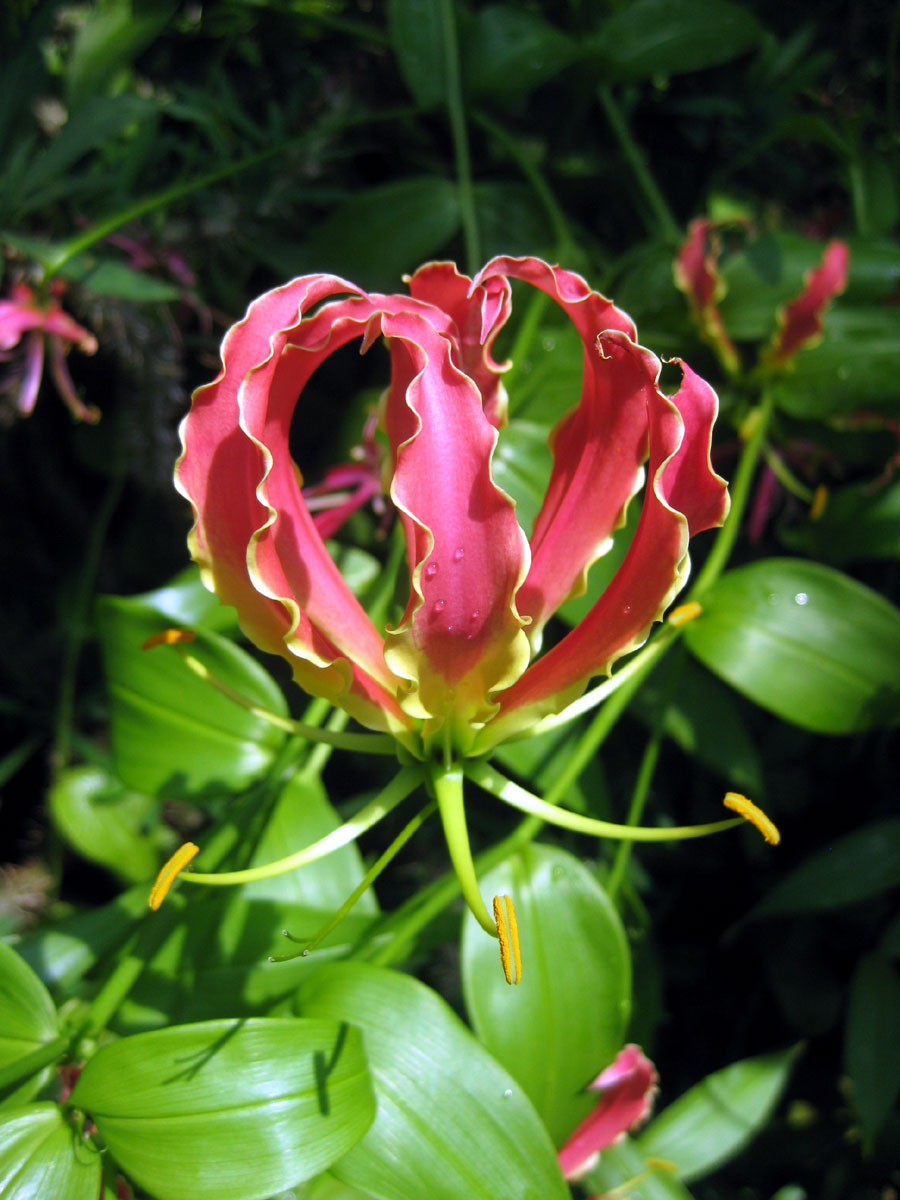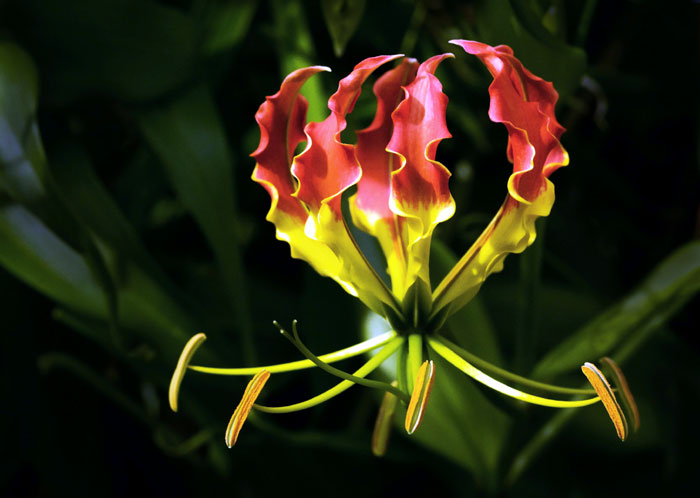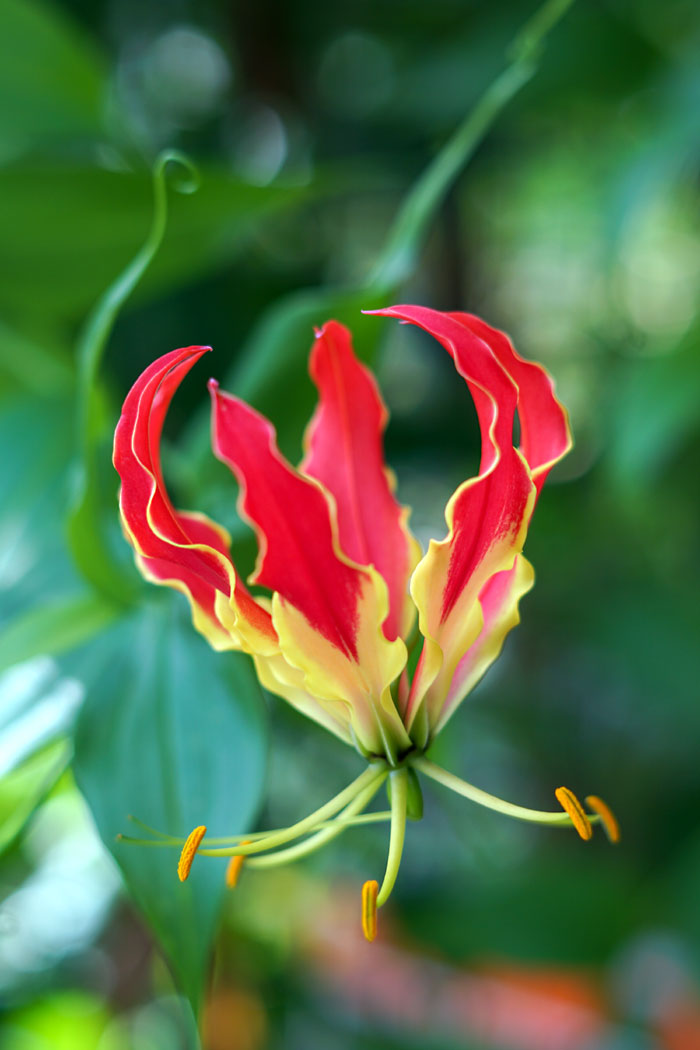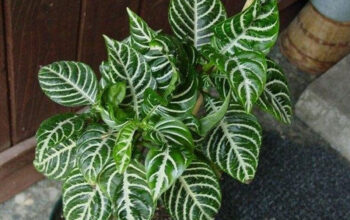Gloriosa Lily (Gloriosa superba)
In the plant family Colchicaceae, Gloriosa contains 12 species, including the unrecognized Littonia. Flame lily, fire lily, gloriosa lily, glory lily, superb lily, climbing lily, and creeping lily are the most common English names for this plant. Having tuberous roots, they are deciduous perennials that thrive in summer rainfall and are dormant during the summer. Gloriosa superba (Fire lilies) contain colchicine and related alkaloids, and are poisonous if swallowed. Contact with the leaves and cut stems of this plant can cause skin irritation. Both in India and Africa, traditional medicines use different preparations from the plant for treating a variety of illnesses.
Gloriosa are perennial herbaceous plants that climb and scramble along with the help of their leaves, reaching heights of three meters. These plants have showy flowers with pronounced reflexed petals, which can range in color from a greenish-yellow through to yellow, orange, red, and even deep pink.
Read also:
- How to grow Lily plant (Lillium).
- Growing Peace lily at home.
- Growing and caring for Agaunthus (African lily)
- Kafir Lily growing and care tips.
Overview of Gloriosa Lily Plant
Scientific Name Gloriosa superba
Common Name Gloriosa, Fire Lilies, flame lily, climbing lily, glory lily, gloriosa lily, tiger claw, agnishikha, creeping lily
Plant Type Houseplant
Sun Requirements Full sun to partial shade
Soil well-drained rich soils
Soil pH 5.8 – 6.5
Blooming time Mid-summer to fall
Flower colour Red, orange, yellow and pink
Zone 8-12
How to Grow and Care Fire Lilies
Seeds must be planted several years before the fire lily blooms, as it typically takes several years for the plants to grow. After the flower has bloomed, plant fresh seeds collected from the fruiting capsule. Incorporate seeds gently into potting soil that is moist and sandy, and keep warm. Three weeks are required for germination.
Fire lilies are tough and resilient plants, just like many South African plants. The fire lily can remain in the same pot for years without any care. The fire lilies need two to three months of rest in the fall and winter when grown as houseplants. During the first month, keep them at a temperature of 40 to 60 degrees Fahrenheit. A fire lily does not need to be pruned. To keep the plant tidy, you can remove dead foliage as necessary.
Sunlight
Due to their heavy growth during the summer season, fire lilies require lots of sunlight. In regards to Gloriosa, they prefer a bright location that has the possibility of morning or evening sun. If they are kept in deep shade, they are considerably more likely to have shortened flowering times and even collapse. Keep your plant in a bright window if you are going to grow it indoors all year long.
Soil
A healthy fire lily plant requires good drainage. Add organic matter, like leaf mold or peat moss, to the soil where you plan to plant lilies to improve both its structure and drainage. Dig your hole to a depth of at least 12 inches, remove rocks, and add organic matter. In an appropriately-sized pot, plant your Fire Lily in well-drained soil. To encourage fast-draining, place a few pot shards at the bottom of the pot. A container-grown plant should be planted in chunky soil mixed with shredded bark, such as that used for orchids. You can also choose a sandy cactus mix.
Water
It is important to water fire lilies moderately. If you are watering the top third during flowering, allow it to dry between waterings. This can be reduced in autumn and winter to be sure that it won’t bloom the following summer, reinforcing its dormancy. You should encourage more growth of the smaller fire bulbs during winter, but don’t go overboard. As soon as the seasons change, feed small amounts of water less frequently.
Temperature and Humidity
Fire lilies look their best at average room temperatures and low humidity. Fire lilies flower more beautifully in cool weather during their dormancy period. Plants can be kept cool during November and December if they are kept in an unheated shed or garage. Temperatures for plants should range between 40 and 60 degrees Fahrenheit during this time period. Keep them indoors as soon as the weather begins to freeze.
Fertilizer
The growth of oriental lilies in good soil does not require fertilization. Depending on the season, fertilize your flowers with a ‘Houseplant’ labeled feed every two to four weeks; this will help prolong their lifespan. It is best to use a slow-release indoor plant fertilizer for your fire lily. When temperatures are chilly in January, February, and March, apply a balanced 10-10-10 fertilizer until August, then apply a fertilizer designed to increase blooming in September and October. It is best not to fertilize in the winter before blooming.
Read also:
Growing and caring for Rutabaga. Growing Peace lily at home. How to grow Sugar cane at home. Ice plants growing and caring guide. How to grow Z Z plants. Aloe black beauty grows and care.
For pin






